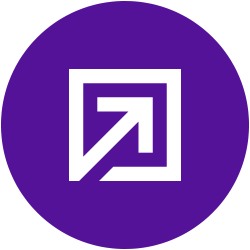How to leverage RPM data to optimize your sales strategy in the chronic disease space
Jan 21st, 2025

Remote patient monitoring (RPM) is gaining traction in healthcare, especially in the chronic disease space, thanks to rapid advancements in technology. RPM uses connected devices to help patients gather health data outside traditional healthcare settings, enabling providers to review the information remotely.
Companies that offer an RPM product or service, or one that complements RPM, can benefit from analyzing RPM data to improve their approach to selling—by identifying client challenges finding key clients, and understanding the competition.
What is remote patient monitoring?
Remote patient monitoring (RPM) is a form of telehealth where a provider collects and monitors their patient’s physiologic data remotely with the help of electronic devices. This data can include vital signs such as blood pressure, heart rate, weight, blood oxygen level, and neurological activity.
RPM offers patients a way to reduce their time in a doctor’s office while also encouraging them to take greater ownership of their health. For those with chronic diseases, RPM can help alleviate the burden of frequent appointments, giving them more freedom and allowing their health condition to become just one part of their life, rather than defining it.
Common RPM devices include:
- Blood pressure cuffs
- Electrocardiograms (ECGs)
- Glucose monitors
- Implanted pacemakers
- Pulse oximeters
Key trends shaping the future of remote patient monitoring
According to our data, RPM experienced a notable surge during the pandemic as healthcare systems sought ways to deliver care while minimizing in-person visits and easing the pressure on hospitals. While its rapid growth has since slowed, RPM remains an integral part of patient care, driven by a continued focus on improving outcomes and an expanding body of evidence supporting its effectiveness.
A recent study from a cardiac surgery program at Atrium Health offers a clear example of RPM’s impact in clinical settings. The study tracked 1,000 patients who underwent coronary artery bypass and valve surgeries across three hospitals from 2019 to 2023. Patients enrolled in RPM programs saw shorter hospital stays, fewer 30-day readmissions, and a higher rate of discharge to home. These findings underscore RPM’s ability to facilitate recovery and reduce hospital resource strain, particularly for high-risk patients.
As RPM continues to evolve, several key trends are shaping its future. One is the integration with electronic health records (EHR), enabling seamless data flow and improving clinical decision-making. Wearables and connected devices are also becoming more advanced, offering a broader range of monitoring capabilities, from vital signs like heart rate and blood sugar levels to more complex metrics such as sleep quality and respiratory health. Finally, reimbursement policies are evolving, with private and public insurers covering RPM services, which is helping drive adoption.
Together, these trends highlight RPM’s continued potential to improve patient care and shape the future of healthcare delivery.
Addressing key concerns to strengthen your RPM sales approach
To position your company or product as a solution, it is first crucial to understand the challenges that healthcare providers face when it comes to RPM.
Several factors contribute to this adoption rate:
- Concerns regarding data security. Many providers see RPM as a potential vulnerability for patient data, which raises concerns around privacy and compliance.
- Fee-for-service payment models. RPM is well-suited to value-based payment models due to its potential to reduce unnecessary admissions, decrease hospital lengths of stay, and minimize in-person visits for patients. However, providers operating under fee-for-service (FFS) structures may be hesitant to adopt RPM due to the risk of losing revenue from traditional office visits.
- Insufficient training/IT framework. Implementing RPM requires robust IT support and, in some cases, bespoke solutions or third-party vendors. Smaller practices, especially those in rural areas, may lack the resources or infrastructure to implement RPM.
- Fewer reimbursement opportunities. CMS has only issued 10 procedure codes related to RPM—a far cry from the 250+ codes it lists for other telehealth services.
- Technology barriers. Around 19 million Americans lack access to high-speed internet, which may disincentivize investment into RPM.
By recognizing these key concerns, you can tailor your sales and marketing strategies to highlight how your product or service effectively addresses these challenges, ultimately positioning your company as a trusted partner in the transition to remote patient monitoring.
Leveraging RPM data to optimize sales
With Definitive Healthcare’s Atlas Dataset, you’re able to dive deep into a healthcare facility’s RPM usage, which can identify those who make use of RPM and those who may be in need of solutions to overcome their barriers to RPM utilization.
Some of the data that can be accessed through Definitive Healthcare’s Atlas Dataset include:
Facilities using RPM
The Atlas Dataset allows you to search facilities by CPT code, making it easy to identify instances where a physician assists a patient in setting up their RPM device. These codes are associated with facilities that use RPM, and the more CPT codes linked to that healthcare organization, the more patients they have using RPM devices.
For businesses targeting RPM adoption, focusing on companies with a high volume of RPM setup CPT codes can be an effective strategy.
Technology overview
The Atlas Dataset provides a technology overview tab within a hospital’s profile, showcasing the current technologies installed at the facility. This feature helps identify hospitals that are already using advanced technologies and those that may be more inclined to adopt your company's products or services.
Product integration
The Atlas Dataset can provide a list of facilities that use a specific product, which is especially valuable if your product or service integrates with that product. This allows you to target facilities that are already using complementary technologies, highlighting how your product can seamlessly enhance their existing setup.
Armed with this information, you can personalize your marketing efforts, focusing on how your solution works in tandem with the hospital's current technology for maximum benefit.
Gauge competition
By analyzing technology market share by vendor, your company can better assess the competitive landscape and determine the level of difficulty in entering or expanding within the market.
Learn more
To explore the data source of our Healthcare Insights and increase the power of your healthcare commercial intelligence, start a free trial today. Our experts are standing by to help you find the products and solutions that are most effective for your specific use cases.

